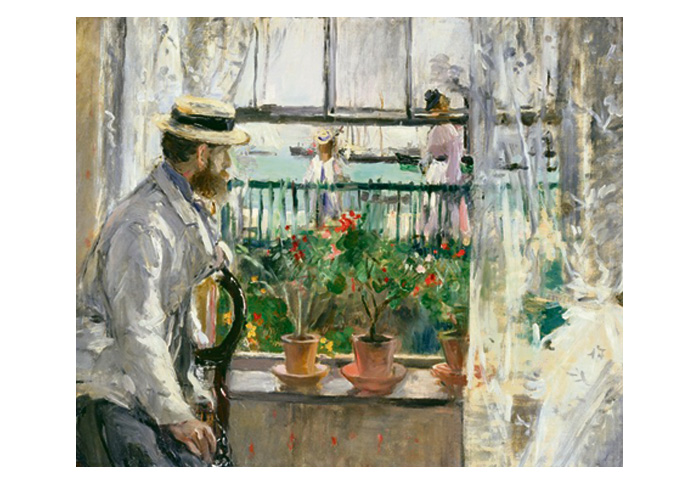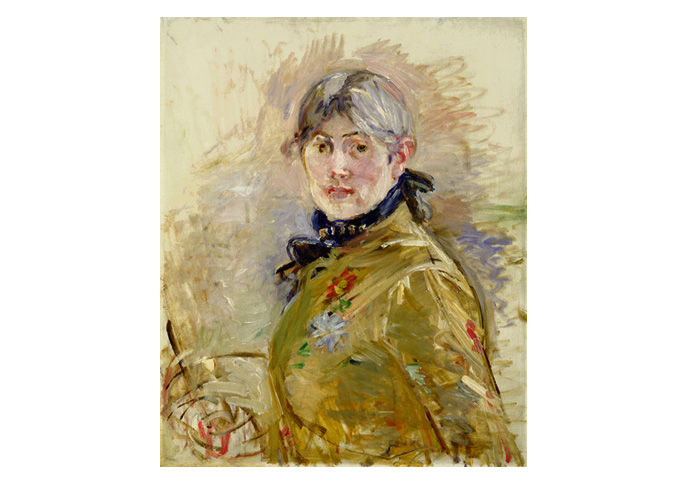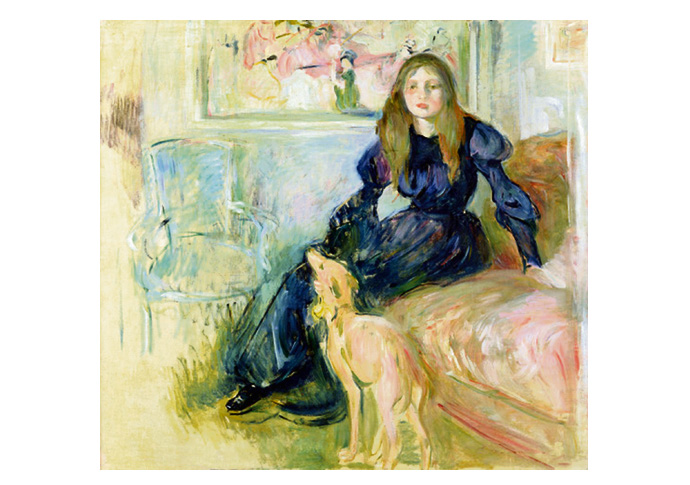A leading light
John Evans views the first major UK show of work by Berthe Morisot since 1950
Thursday, 13th July 2023 — By John Evans

Berthe Morisot, Eugène Manet on the Isle of Wight, 1885, oil on canvas, 38 x 46cm © Musée Marmottan Monet, Paris
A SELF-PORTRAIT of Berthe Morisot from 1885, a mature work, offers a view of a confidant and formidable artist using colour with a refreshing freedom and brush strokes of almost abandon.
It’s a statement piece.
Yet the work of Morisot (1841-1895) has regularly been defined by the men said to have influenced it.
Among these are her father, Edmé, who studied painting in his youth; Jean-Baptiste Camille Corot, who became her tutor; Edouard Manet, too, for whom she was friend and muse; and her husband Eugène Manet, the latter’s younger brother; she would also later be influenced by Pierre-Auguste Renoir, and so on.
The people responsible for the current exhibition at Dulwich Picture Gallery, Berthe Morisot: Shaping Impressionism, take the debate about this founding member of the Impressionist group, the sole woman, even wider in the first major outing of her work in the UK since 1950. Morisot featured prominently in seven of the eight Impressionist exhibitions, having first been invited to join by Edgar Degas, and “defied social norms” to become one of its leading figures.

Berthe Morisot, Self-Portrait, 1885, oil on canvas, 61 x 50cm © Musée Marmottan Monet, Paris
More than 30 of her works, including loans from international and private collections, some never seen before in this country, are displayed in the current exhibition, which is a collaboration with the Musée Marmottan Monet, in Paris.
In their foreword to a show catalogue, the directors of Dulwich and the Marmottan Monet, Jennifer Scott and Érik Desmazières, say their institutions forged a scientific partnership to celebrate Morisot as “a leading light in the history of art” and create a show that does justice to her “distinctive genius”.
From writings about the first 1874 Impressionist show onwards, the influence of 18th-century predecessors upon the group was discussed and how the popularity of works rise or fall over time. Not everyone was impressed!
A central theme is that of the “rediscovery” of 18th-century art in France and its impact on Impressionism with an accompanying body of work by artists including François Boucher, Jean-Baptiste-Siméon Chardin, Jean-Honoré Fragonard and Antoine Watteau. There are 15 or so works for comparison in the Dulwich show to reveal what the curators describe as a “previously untold” connection between Morisot’s work and the culture of the preceding century.
The catalogue explores these ideas and influences in depth with research based, in part, on documents including papers and unpublished letters made available by Morisot’s family.

Berthe Morisot, Julie Manet with her Greyhound Laerte, 1893, oil on canvas 73 x 80cm © Musée Marmottan Monet, Paris
In addition to the self-portrait, another true highlight is from 10 years earlier when Morisot painted her husband Eugène by the sitting room window of Globe Cottage at West Cowes while they honeymooned on the Isle of Wight.
They would take in not only the regatta there but Goodwood races and, in London, the major galleries.
And though quite likely, there’s no visitor book for the relevant dates to confirm that Dulwich was among those galleries. But Morisot saw paintings by JMW Turner and William Hogarth; and was particularly struck by Thomas Gainsborough, Joshua Reynolds and George Romney.
The exhibition also highlights Morisot’s ability to depict the intimacy of a domestic setting and quickly capture contemporary life, as with the action outside the window in the honeymoon picture (above). Oil sketches and watercolours helped.
And some pastels can also be seen here. Her skill with these brought Morisot early praise from colleagues and she would return to using them later. After 1885 or so she would generally make a pastel study before starting a painting. Individual works are identified as paying tribute to, variously, Watteau, Fragonard, Francisco Goya and more. And especially Boucher.
But her use of a sketchy style and shimmering colours with startling contrasts, and daring brush strokes make her works stand out.
So too her putting the experience of women at the heart of her work.
• Berthe Morisot: Shaping Impressionism is at Dulwich Picture Gallery, Gallery Road, SE21 7AD until September 10. Details: www.dulwichpicturegallery.org.uk